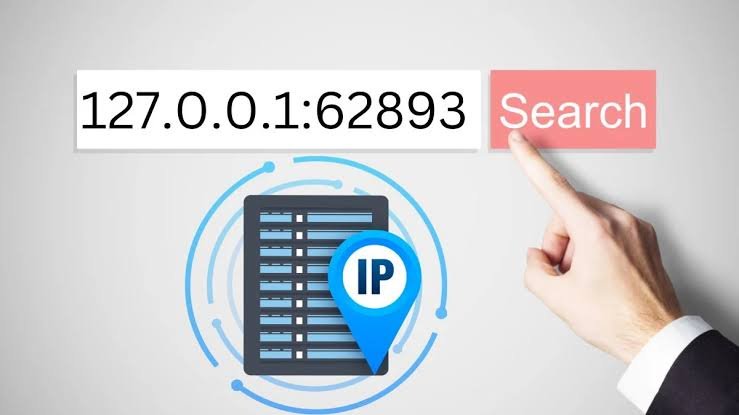Introduction
Ever stumbled upon the address 127.0.0.1:62893 and wondered what it means? You’re not alone. Whether you’re curious because you’ve seen it in your browser, or perhaps in a technical discussion, this blog post will break it all down for you. By the end of this read, you’ll understand what this address represents, how it’s used, and why it’s significant in the world of computing. Let’s dive in!
What Is 127.0.0.1:62893?
First things first, 127.0.0.1 is an IP address, but not just any IP address. It’s the loopback address, commonly referred to as localhost. This address is used by your computer to communicate with itself. When you type 127.0.0.1 in your web browser, you’re essentially telling your computer to look inward, rather than reaching out to the internet.
Now, what about the 62893 part? That’s a port number. Ports are like channels on your TV; they allow different services or applications to run simultaneously without interfering with each other. In the case of 127.0.0.1:62893, 62893 is the specific port that a particular application or service is using to communicate over the loopback address.
Why 127.0.0.1:62893 Matters
You might be wondering, “Why should I care about this?” Well, understanding 127.0.0.1:62893 can be quite important, especially if you’re involved in web development, IT, or even just troubleshooting network issues.
- Testing and Development: Developers often use 127.0.0.1 to test web applications locally before deploying them to a live server. The port number, like 62893, helps differentiate between different services running on the same machine.
- Security Implications: Knowing which ports are open on your localhost is crucial for security. If a service is running on port 62893 without your knowledge, it could potentially be exploited by malicious actors if they gain access to your machine.
- Troubleshooting: If you’re trying to figure out why a particular service isn’t working, understanding that it’s bound to 127.0.0.1:62893 can help you diagnose the problem more efficiently. You might need to check if the service is running, if the port is open, or if there’s a conflict with another service.
How to Use 127.0.0.1:62893 in Practice
Let’s say you’re developing a web application and you’re using localhost to test it. Your application might be accessible via 127.0.0.1:62893. Here’s how you might go about using it:
- Start Your Service: Ensure your application is running. It might be a web server, a database service, or any other software that communicates over the network.
- Access the Service: Open your web browser and type http://127.0.0.1:62893 into the address bar. This directs your browser to connect to the service running on port 62893 of your localhost.
- Troubleshoot Issues: If the service doesn’t load, check that it’s actually running on port 62893. You can use tools like
netstatorlsof(on Unix-based systems) to see which ports are in use.
Common Issues with 127.0.0.1:62893
Using 127.0.0.1:62893 can sometimes come with its own set of challenges. Here are a few common issues and how to resolve them:
- Port Conflicts: If two services try to use the same port, you’ll encounter a conflict. To resolve this, you’ll need to reconfigure one of the services to use a different port.
- Service Not Running: If nothing loads when you try to access 127.0.0.1:62893, make sure the service you’re trying to connect to is actually running. Sometimes, services fail to start, or they may crash.
- Firewall Issues: Though uncommon with localhost, firewalls can sometimes block ports. Ensure that your firewall isn’t preventing access to port 62893.
Conclusion
Understanding 127.0.0.1:62893 may seem a bit technical at first, but it’s actually a fundamental concept in the world of networking and computing. Whether you’re a developer testing an application, an IT professional securing a system, or simply curious, knowing how localhost and port numbers work can save you a lot of headaches down the road.
Frequently Asked Questions
Q1: What is 127.0.0.1:62893 used for?
A: It’s used to access a service running on your computer via the loopback IP address (127.0.0.1) and a specific port (62893). This is common in development and testing environments.
Q2: Can I change the port number 62893?
A: Yes, you can change the port number by reconfiguring the service running on that port. This is often done if there’s a conflict with another service.
Q3: Is 127.0.0.1:62893 accessible from the internet?
A: No, 127.0.0.1 is a loopback address and is only accessible from the machine it’s running on. It’s not accessible from external networks.
Q4: How do I check what’s running on 127.0.0.1:62893?
A: You can use network monitoring tools like netstat or lsof to check what service is using a specific port on localhost.
Q5: Why can’t I connect to 127.0.0.1:62893?
A: This could be due to several reasons, including the service not running, a port conflict, or firewall settings blocking the connection.
Q6: Is it safe to use 127.0.0.1:62893?
A: Yes, using localhost addresses like 127.0.0.1 is generally safe as it confines communication within your computer. However, it’s important to manage your ports and services securely.

